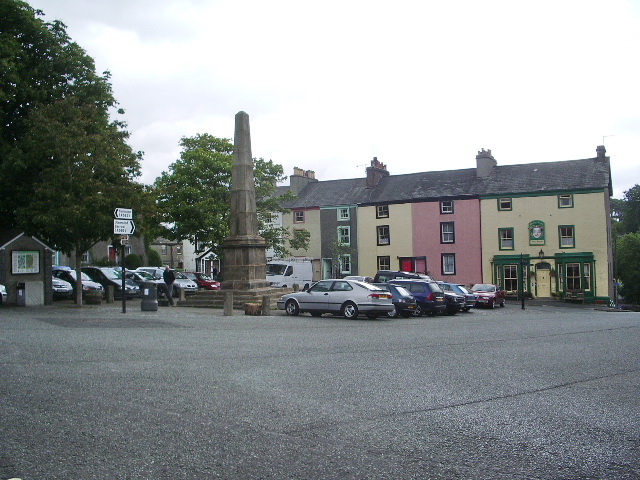Topics > Cumbria > Broughton-in-Furness > Broughton-in-Furness, 1848
Broughton-in-Furness, 1848
BROUGHTON-in-Furness, a market-town and chapelry, in the parish of Kirby-Ireleth, union of Ulverston, hundred of Lonsdale north of the Sands, N. division of the county of Lancaster, 29 miles (N.W.) from Lancaster, and 270 (N.W. by N.) from London; containing 1,250 inhabitants. The town is situated on the southern declivity of a gentle eminence, and is in the form of a square; the houses are built of stone, and roofed with blue slate. In the centre of it is a spacious square area, the ground for forming which was given by John Gilpin, Esq., and in which his widow erected a handsome lofty obelisk. Previously to the introduction of machinery, the spinning of woollen-yarn prevailed to a considerable extent in private houses: the making of brush-stocks and hoops at present furnishes employment to many of the inhabitants, particularly the latter, from the number and extent of the coppices on Furness Fells. There was formerly a very extensive tract of uncultivated land called Broughton Common, nearly all of which is now inclosed. The surrounding country is very mountainous, abounding with mines of iron and copper ore, and with slate-quarries; a great quantity of slate is shipped at Dudden Sands, for conveyance coastwise. Iron, grain, malt, oak-bark, and hoops, are also sent from the same spot, in vessels averaging about 60 tons' burthen; and from a place about half a mile below Dudden Bridge, in vessels of 25 tons' burthen, for which the estuary is navigable at the flow of the tide. An act was passed in 1846 for extending the Furness railway to this place. The market is on Wednesday: fairs are held on April 27th and August 1st, for horned-cattle, and on the 6th of October, for horned-cattle and sheep; those in April and October, are likewise statute-fairs for the hiring of servants, and all are much frequented by the clothiers from Yorkshire. The living is a perpetual curacy; net income, £108; patron, J. Sawrey, Esq.; appropriators, the Dean and Chapter of York, whose tithes were commuted for land in 1828. The chapel is dedicated to St. Mary Magdalene. Edward Taylor, by will dated in 1784, bequeathed £100, on condition that £60 should be raised by subscription, for the benefit of a grammar school.
Extract from: A Topographical Dictionary of England comprising the several counties, cities, boroughs, corporate and market towns, parishes, and townships..... 7th Edition, by Samuel Lewis, London, 1848.









